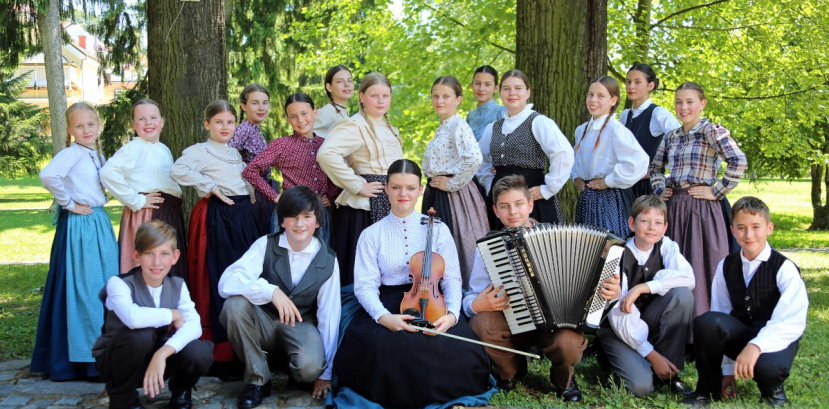With a population of 95,000, Maribor is the second-largest city in Slovenia and the major urban centre in the region of Lower Styria. Also called Slovenian Styria, it is but a southern third of the historical region of Styria, which between 1180 and 1918 enjoyed a distinct political and administrative status as the Duchy of Styria. Today its upper and central parts form the Austrian state of Styria (Steiermark), whereas the lower, Slovenian part – under the name of Štajerska – is inhabited by 705,000 Slovenes, which constitutes approximately 35% of the population of Slovenia.
The children’s folk dance group KUD Študent Maribor was founded in 2010, and is the youngest section of the Culture & Art Association Študent Maribor, which began its operation in 1964. The children’s folk dance ensemble was established to preserve and popularise the Slovene folk tradition in the form of dances, songs, customs, costumes and games, with particular emphasis on the culture developed in the region of Štajerska. The dances are very vigorous, playful and joyous. Typically, most Slovenian dances are composed of two parts, the second part being a polka or a waltz, which are popular in other European countries as well.
On their national day the Slovenes will present a suite of Štajerska dances with wooden spoons (Abraham, trojka, špic polka, gospod-gospa and miha tunča polka); dances with cepci (flails), opening with the song prišla bo spet pomlad, and illustrating everyday chores performed by farmers throughout the year, one of the chores being wheat threshing with cepci, which were also used by children as objects to play with. This picture will be concluded with such dances as šamarjanka, zibenšrit, šotiš polka and polka po lufti. Another image from the past will depict girls doing laundry (dekle je pralo srajčki dve) and also feature some dances, including playful ones. Treating of haying, travnički so že zeleni will be the last part and will be interspersed with such dances as mazurka, ceperle, ajnzarca and poskočna polka.
Aleksandra Petrovič and Marko Pukšič are the ensemble choreographers and leaders. Gašper Waldhütter is the leader of the musical band, which will be playing accordions, violins and clarinets.
The children’s folk dance group KUD Študent Maribor was founded in 2010, and is the youngest section of the Culture & Art Association Študent Maribor, which began its operation in 1964. The children’s folk dance ensemble was established to preserve and popularise the Slovene folk tradition in the form of dances, songs, customs, costumes and games, with particular emphasis on the culture developed in the region of Štajerska. The dances are very vigorous, playful and joyous. Typically, most Slovenian dances are composed of two parts, the second part being a polka or a waltz, which are popular in other European countries as well.
On their national day the Slovenes will present a suite of Štajerska dances with wooden spoons (Abraham, trojka, špic polka, gospod-gospa and miha tunča polka); dances with cepci (flails), opening with the song prišla bo spet pomlad, and illustrating everyday chores performed by farmers throughout the year, one of the chores being wheat threshing with cepci, which were also used by children as objects to play with. This picture will be concluded with such dances as šamarjanka, zibenšrit, šotiš polka and polka po lufti. Another image from the past will depict girls doing laundry (dekle je pralo srajčki dve) and also feature some dances, including playful ones. Treating of haying, travnički so že zeleni will be the last part and will be interspersed with such dances as mazurka, ceperle, ajnzarca and poskočna polka.
Aleksandra Petrovič and Marko Pukšič are the ensemble choreographers and leaders. Gašper Waldhütter is the leader of the musical band, which will be playing accordions, violins and clarinets.

